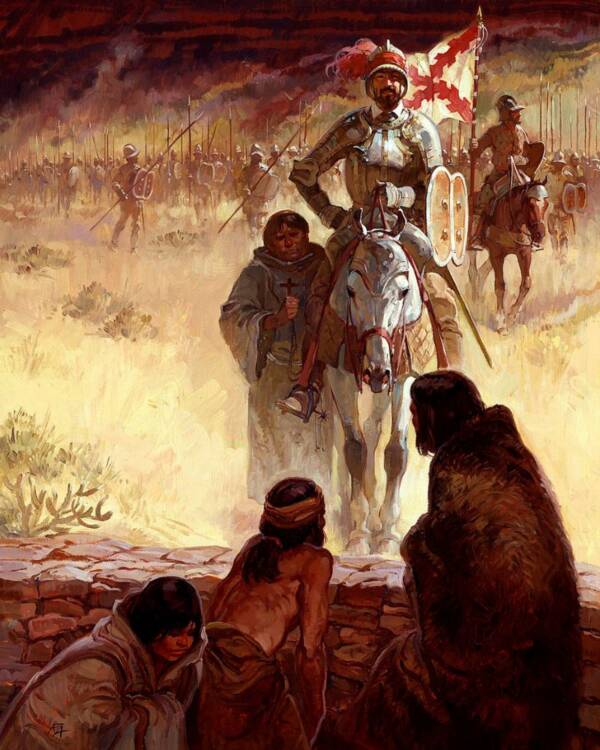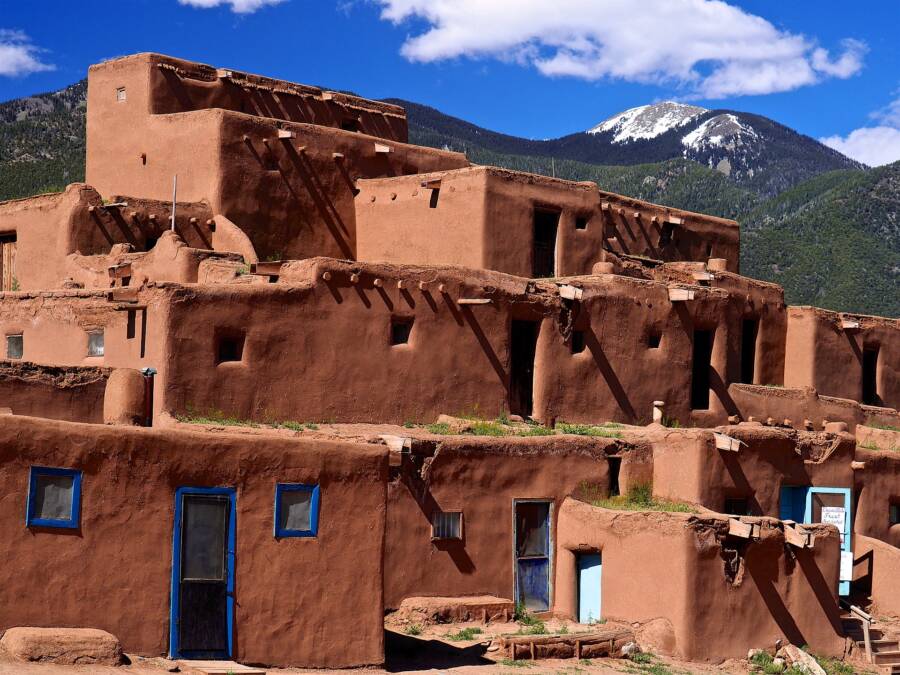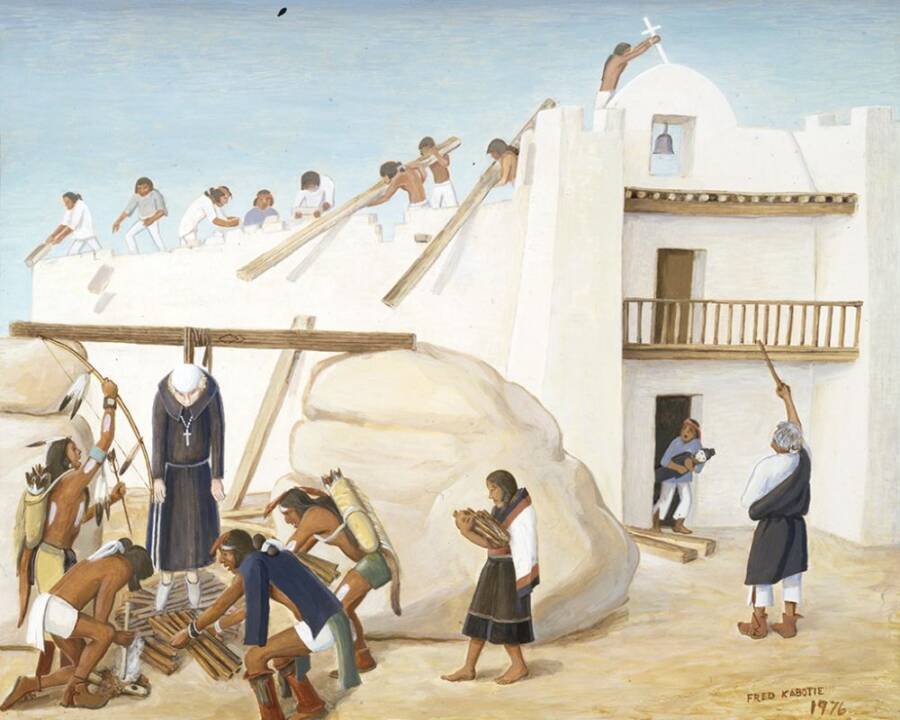In 1680, a medicine man named Po'pay led the most successful Native uprising in American history, running Spanish colonizers off of Pueblo lands for 12 years.
The first American revolution didn’t take place in 1776. It didn’t even take place in the original 13 colonies. Instead, the Pueblo Revolt of 1680 saw the Indigenous people of New Mexico successfully force Spanish colonizers out of their land.

TwitterThe Pueblo Revolt of 1680 helped preserve Indigenous culture in New Mexico.
The Pueblo people had grown tired of the oppressive Spanish regime. Catholic settlers were forcing them to convert from their native religions and punishing them brutally if they refused.
A medicine named Po’pay decided to lead a revolt to push the colonizers out of New Mexico. He plotted in secret for four years before putting his plan into action. The revolt began on Aug. 10, 1860 — and within 11 days, the Spanish had fled.
The Pueblo Revolt was the most successful Native uprising in American history, and it is a large part of the reason that the Puebloan culture, languages, and religions are still around today.
How Spanish Colonizers Oppressed The Pueblo People
In 1598, Spanish conquistadors arrived in modern-day New Mexico. They soon discovered that the Pueblo people were already living in the area, but that didn’t stop them from attempting to take over.
According to HISTORY, the Spanish colonizers began enslaving Pueblo men and women and forcing them to practice Christianity. They outlawed traditional Indigenous religious practices and punished them publicly for resisting.
The Spanish prohibited the Pueblo people from owning horses or guns, burned their ceremonial pits, and destroyed their sacred objects. They also brought diseases like smallpox, measles, and typhus, which killed thousands of Natives.

National Park Service/Roy AndersenFrancisco Vasquez de Coronado making contact with the Pueblos in 1540, nearly 60 years before New Mexico was colonized.
“We will take you and your wives and children and make them slaves,” the conquistadors reportedly told the Pueblo people, “and as such we will sell them, and will dispose of you… and will do to you all the harm and evil we can.”
The conditions were ripe for rebellion. As Harvard archaeologist and anthropologist Matthew Liebmann put it in Revolt: An Archaeological History of Pueblo Resistance and Revitalization in 17th Century New Mexico, “By the 1670s the cycle of famine, raiding, and disease was spinning out of control.”
Liebmann also noted that “no less than eight Native revolts occurred among the Pueblos before the more famous and successful uprising of 1680.”
It was the arrest and flogging of a holy man named Po’pay around 1676 that planted the seeds of rebellion — and the uprising would bloom with a vengeance four years later.
The Flogging Of Po’pay And The Plotting Of The Pueblo Revolt
In the mid-1670s, 47 Pueblo people were arrested for sorcery after refusing to convert to Christianity. Three of them were hanged, while the rest were whipped publicly.
One of the men who was flogged was Po’pay, a medicine man and a war captain of the Ohkay Owingeh tribe. According to Encyclopedia Britannica, he believed that his tribal ancestors wanted him to restore old Pueblo customs. So he started planning a revolt.
For four years, Po’pay plotted in complete secrecy in the Taos Pueblo village. He reportedly even killed his own son-in-law when he suspected him of speaking about the rebellion to others.

Wikimedia CommonsTaos Pueblo, the village where Po’pay reportedly plotted the Pueblo Revolt.
As the time for the uprising approached, Po’pay had to figure out how to spread the news of the plan to other Pueblo leaders. Different tribes spoke different languages, and some of the communities were spread more than 400 miles apart.
Since the Pueblo people weren’t permitted to ride horses, Po’pay decided to send runners to each village with a knotted cord. Each day, the community leader would untie one of the knots — and when they were all unraveled, it would be time to attack.
The 11-Day Pueblo Revolt That Forced The Spanish Out Of New Mexico
On Aug. 10, 1680, the revolt began. The Pueblos attacked in unison, doing everything they could to get rid of their Spanish colonizers. Per HISTORY, they stole horses to stop the Spanish from fleeing, sacked businesses, blocked roads, vandalized Catholic churches, and even cut off the water supply to Santa Fe.
Within 11 days, 400 Spaniards were dead, including 21 priests. Another 2,000 had fled the area — and they wouldn’t return for 12 years.
The revolt had been successful. The Pueblos celebrated by destroying more churches and annulling Christian marriages. They had protected their culture, and many of them wanted to get rid of any trace of the Spanish left behind.

Fred Kabotie/Museum of Indian Arts & CultureAn illustration of a group of Pueblo people hanging a Catholic priest.
As Jon Ghahate, an educator at the Indian Pueblo Cultural Center in Albuquerque and a member of the Laguna and Zuni Pueblos, put it: “If they had lost, we would not be here. This is what was at stake in 1680. I would not be here, and the languages of our ancestors would not be here.”
Of course, the Spanish saw things differently. Antonio de Otermín, who was the governor of New Mexico at the time, wrote that the rebellion was a “lamentable tragedy, such as has never before happened in the world, which has occurred in this miserable kingdom and holy custodia.”
The Pueblo people successfully kept the Spanish out of New Mexico for several years — but their victory couldn’t last forever.
The Aftermath Of The Pueblo Revolt And Its Impact On History
New Mexico and the Pueblo people were ultimately conquered again by Pedro de Vargas in 1692, but the 12 years between the revolt and re-colonization allowed the Pueblo culture to continue to grow and thrive. And when the Spanish returned, they were generally much more tolerant of Pueblo values and traditions.
Today, with the help of tribal cultural centers and other institutions, Pueblo culture, languages, and religions have been preserved, largely due to Po’pay and the other brave Pueblos who fought to rid their communities of Spanish oppression.

Chris Maddaloni/Roll Call/Getty ImagesThe unveiling ceremony of the statue of Po’pay at the U.S. Capitol.
In 2005, after a decades-long campaign, Po’pay was honored with a statue in the National Statuary Hall at the U.S. Capitol. Each state has two statues of notable historical figures in the hall, and Po’pay was selected to represent New Mexico.
Herman Agoyo, an Ohkay Owingeh member, noted, “To the Pueblo people here, Po’pay is our hero. Tribes were on the verge of losing their cultural identity when the Pueblo Revolt brought everything back on track for our people.”
After learning about the Pueblo Revolt, read about Túpac Amaru II, who led another Indigenous revolt against Spanish colonialism. Then, learn about La Noche Triste, when the Aztecs tried to hold off the Spanish invasion of Tenochtitlan.





